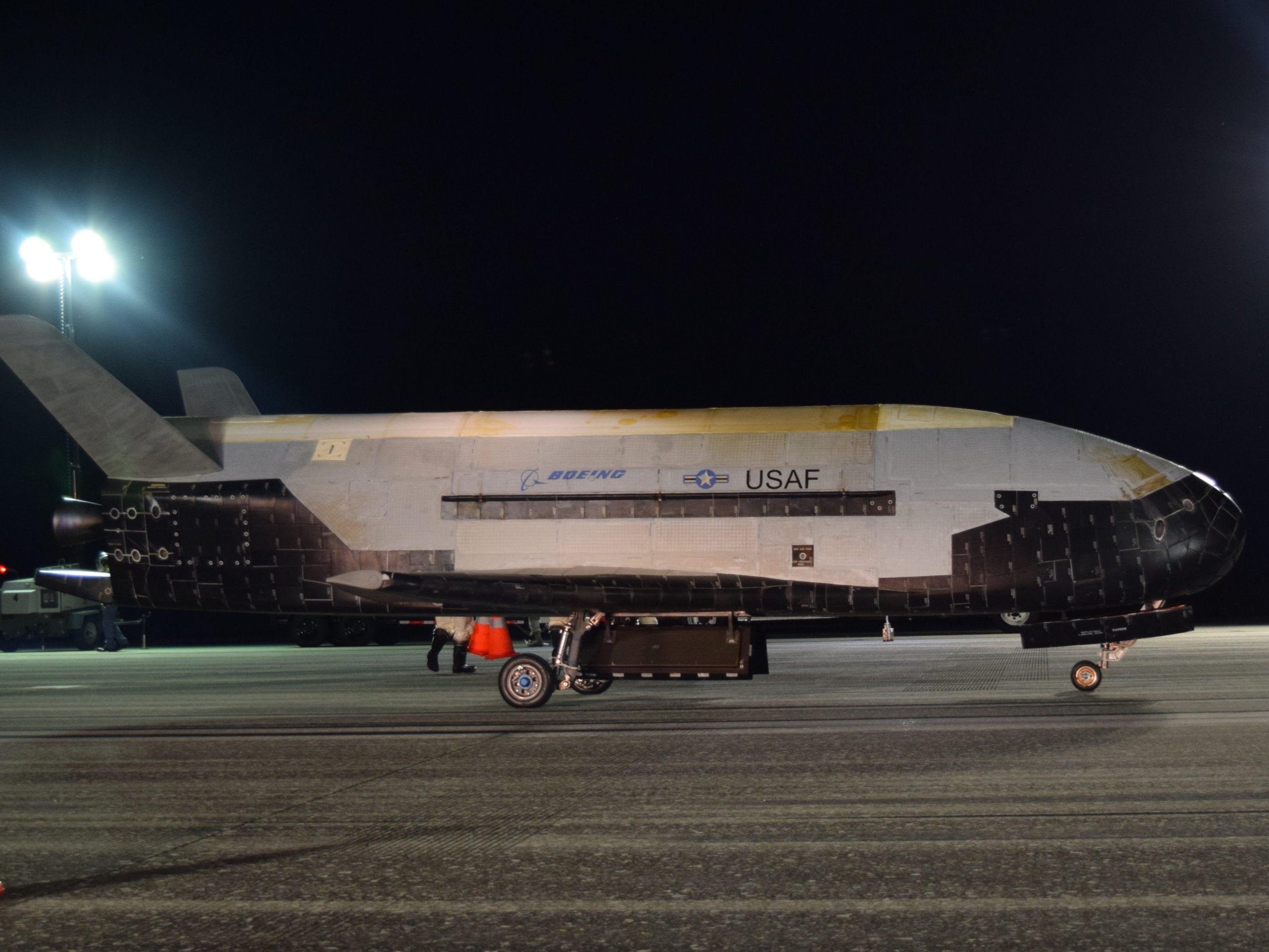
Residents of Florida’s ‘Space Coast’ in northern Brevard County were awakened with sonic booms before the crack of dawn this morning, thanks to the unannounced arrival of the secretive U.S. Air Force X-37B spaceplane, which landed at NASA’s Kennedy Space Center at 3:51 a.m. local after spending 780 days in space.
Doing what? Who knows, but today’s landing closes out the Orbital Test Vehicle (OTV) program’s 5th flight, breaking its previous record for time in space on a mission and accumulating a grand total of 2,865 days on-orbit through the program, which “performs risk reduction, experimentation and concept of operations development for reusable space vehicle technologies,” according to the USAF.

“This program continues to push the envelope as the world’s only reusable space vehicle. With a successful landing today, the X-37B completed its longest flight to date and successfully completed all mission objectives,” said Randy Walden, Air Force Rapid Capabilities Office director. “This mission successfully hosted Air Force Research Laboratory experiments, among others, as well as providing a ride for small satellites.”
The spaceplane launched atop a SpaceX Falcon 9 rocket from KSC pad 39A on Sep 7, 2017, where Boeing maintains two of the vehicles in a former space shuttle processing hangar behind the landscape’s iconic and colossal Vehicle Assembly Building.

It first launched on April 22, 2010 and spent nearly 225 days aloft, followed by the second mission launched March 5, 2011 which spent 469 days aloft. The third mission was launched on Dec. 11, 2012 and spent 674 days in orbit, followed by OTV-4 in May 2015, which stayed on-orbit for 718 days before landing at KSC in May 2017.
A sixth mission, OTV-6, is slated to launch from Cape Canaveral Air Force Station in 2020.
.
.
FOLLOW AmericaSpace on Facebook and Twitter!
.
.






well atleast we have soething no one else has a secret launch platform that isn’t advertised for all to know way to go airforce and boeing
Is spent billions of dollars on this, how much did they spend on trying to fix the planet we live on, or I guess we have to spy on the other side
WE were left in the dark about a vehicle around for 9 years and flying around Earth for 2 years? What? Why???????????